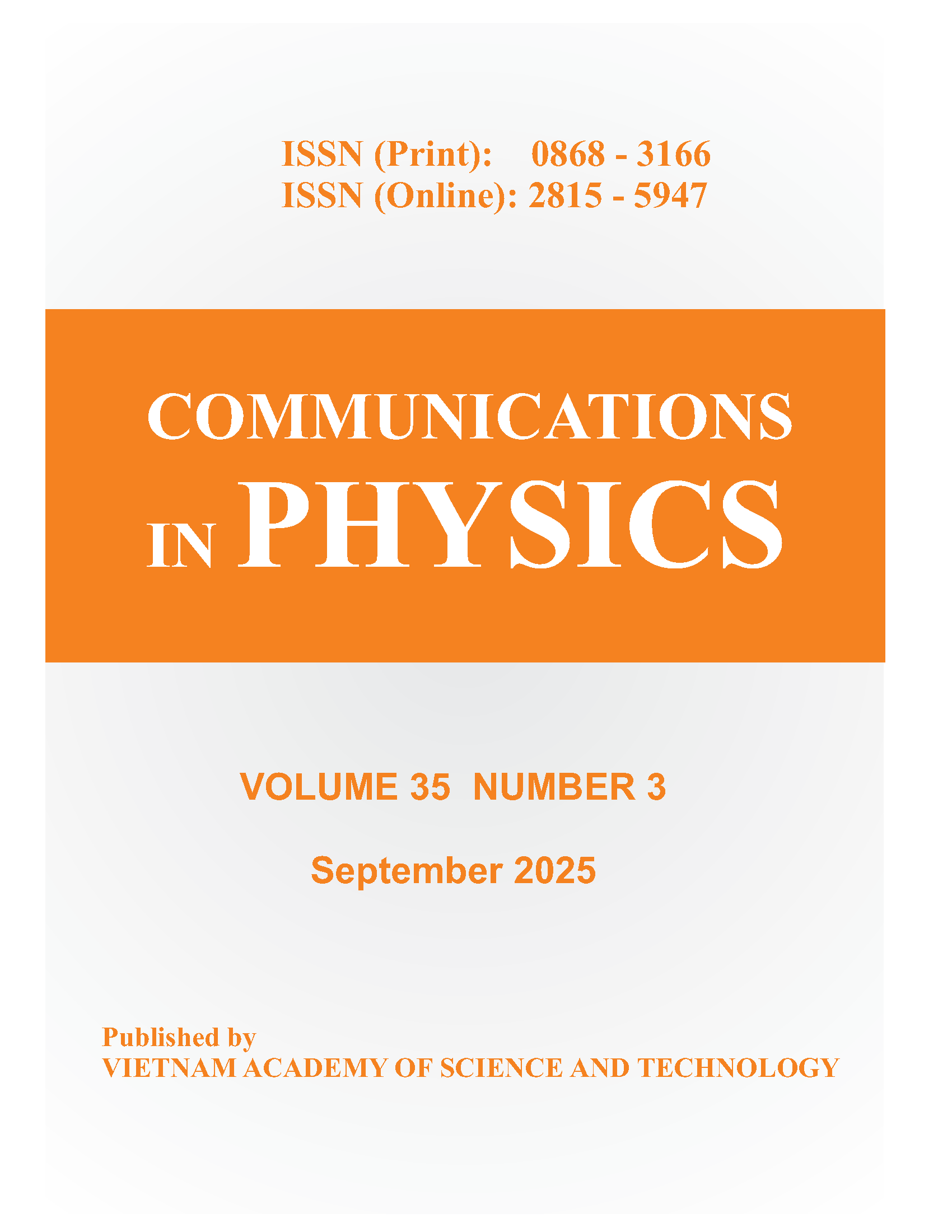Equivalence Between Vector Meson Dominance and Unitarised Chiral Perturbation Theory
Author affiliations
DOI:
https://doi.org/10.15625/0868-3166/24/4/5504Abstract
It is explicitly shown that either the approximate solution of the integral equation for the inverse of the pion form facto,r or the result of the Pad\(\text{\'e}\) approximant method of resumming the one loop Chiral Perturbation Theory (CPTH) are equivalent to the standard vector meson dominance (VMD) models, using the vector meson coupling to two pseudoscalars given by the KSRF relation. Inconsistencies between the one loop CPTH and its unitarised version (or the VMD model) are pointed out. The situation is better for the CPTH calculation of the scalar form factor and the related S-wave $\pi \pi$ scattering. The branching ratios of \(\tau \to \pi^+ \pi^0 \nu \), \(\tau \to K \pi \nu \), \(\tau \to K^+ \eta \nu\) and $\tau \to K^+ \bar{K^0} \nu\) using only two inputs as the \(\rho\) and \(K^*\) masses, or the two corresponding rms radii, agree with the experimental data. Using the same number of parameters, the corresponding one loop CPTH calculation cannot explain the $\tau$ data.Downloads
Downloads
Published
How to Cite
Issue
Section
License
Communications in Physics is licensed under a Creative Commons Attribution-ShareAlike 4.0 International License.
Copyright on any research article published in Communications in Physics is retained by the respective author(s), without restrictions. Authors grant VAST Journals System (VJS) a license to publish the article and identify itself as the original publisher. Upon author(s) by giving permission to Communications in Physics either via Communications in Physics portal or other channel to publish their research work in Communications in Physics agrees to all the terms and conditions of https://creativecommons.org/licenses/by-sa/4.0/ License and terms & condition set by VJS.











